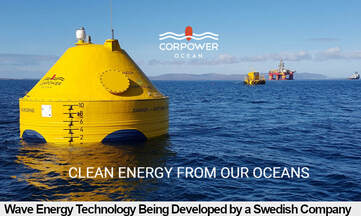
He was anything but.
Following his rejection by FPL, Marcus tried to pitch his idea to other utilities as well as the federal and coastal state governments. Their reactions mirrored that of FPL. They would not even consider his proposal.
His timing was unfortunate. It coincided with the beginning of the Reagan Era, when one of the first official acts of the new president was to order the solar panels that provided much of the White House’s energy needs removed, a symbolic tip of the hat to his climate change skeptical party.
In the intervening years, the United States half-heartedly pursued a range of alternative, renewable energy initiatives despite the clarion calls of scientists that the day of climate reckoning was fast approaching. Fossil fuel industry lobbyists dropped oceans of money into politicians’ pockets in a successful effort to ward off the renewable threat to their paymasters’ lucrative livelihoods and luxurious lifestyles. The downsides of continued reliance on high-polluting and carbon-emitting energy sources were suppressed by both industry and the craven politicians that did its bidding, no questions asked. Consequently, American renewables research and development has been late to the table. Opportunities to lower costs and create jobs were irretrievably lost. Renewable industries that could have positioned America in the forefront of global climate leadership were suppressed. Instead of leading the world into the future and reaping the rewards of so doing, we wallowed in the fantasy world of climate change denial.
Meanwhile, other nations jumped into the vacuum created by American indifference and now own the climate change opportunity space. China is, of course, our principal rival in the race to corner and profit from climate change technologies. But it is hardly the only country that has left the U.S. in the dust. The UK, Australia, Sweden, Norway, Finland, Denmark, Iceland and even Portugal and Chile are also beating us.
Wave energy has tremendous potential. Almost three-quarters of the Earth is covered by oceans. Wave energy is green. It does not emit carbon or harmful gases. It is renewable. One meter of wave along the shore can produce enough electricity to power the average American home. Wave energy is reliable. Unlike solar, which needs the Sun to shine, and wind towers, which needs the wind to blow, waves are always in motion and never interrupted.
Until now, the downsides have been cost and the corrosive effects of salt water, but those are on the cusp of being solved. Scotland announced last month that it is deploying wave energy machines in the Orkney Islands that will provide electricity to 20,000 homes at costs comparable to fossil fuels.
Meanwhile, the U.S., which has the potential to meet more than 75 percent of our energy needs via wave energy, sits on the sidelines, distracted by still having to do battle with congressional and other climate change deniers.
Dick Hermann
August 15, 2021


 RSS Feed
RSS Feed